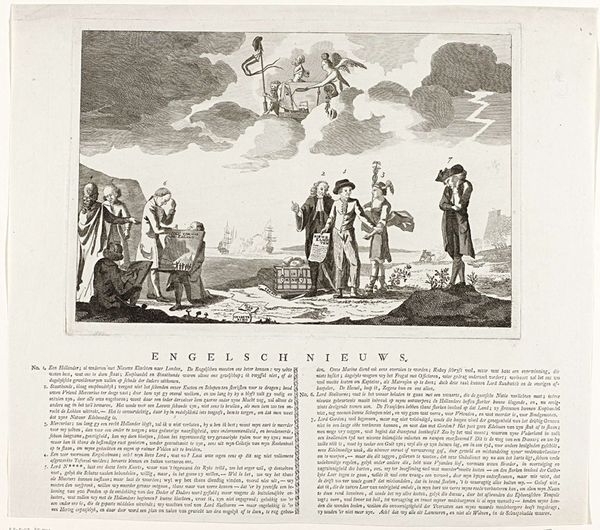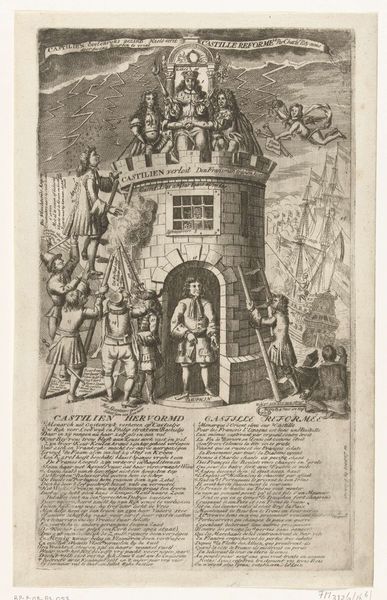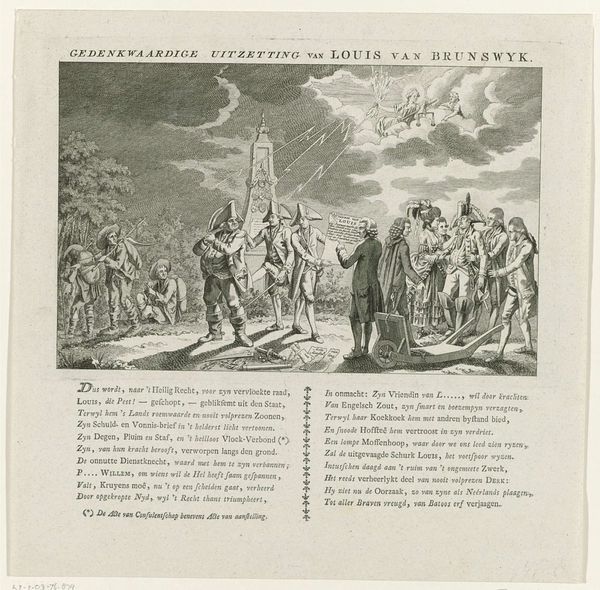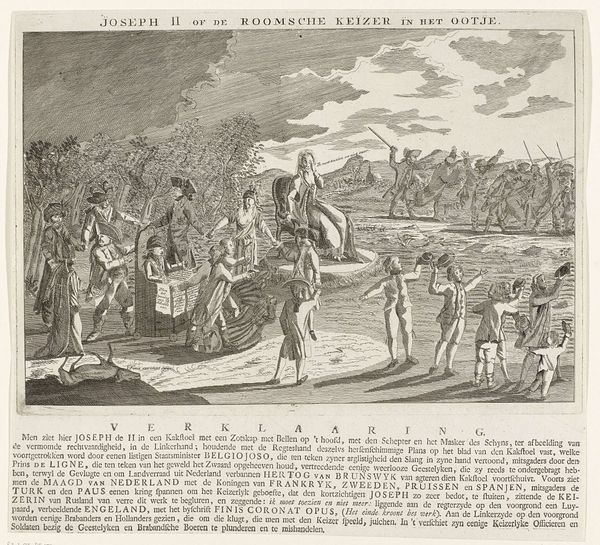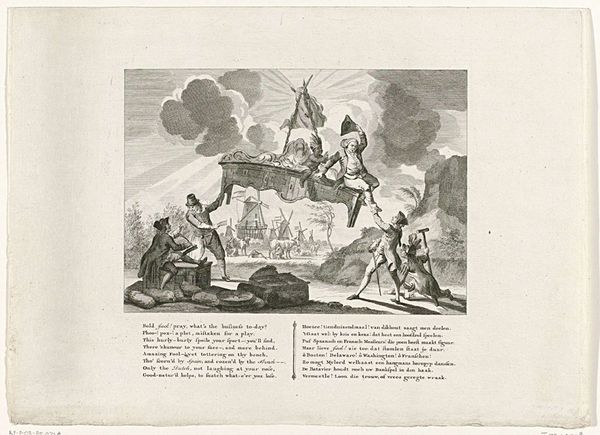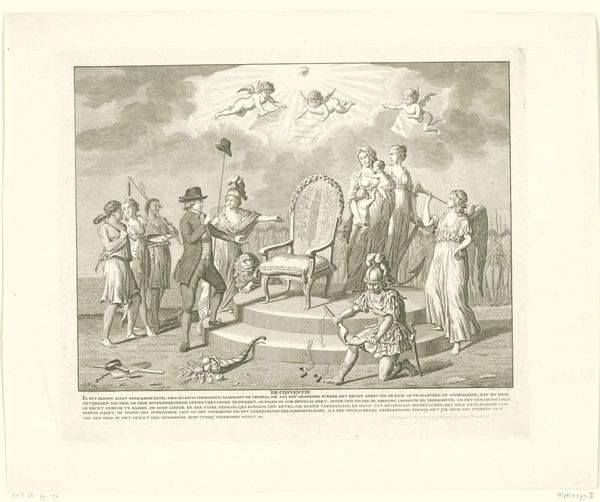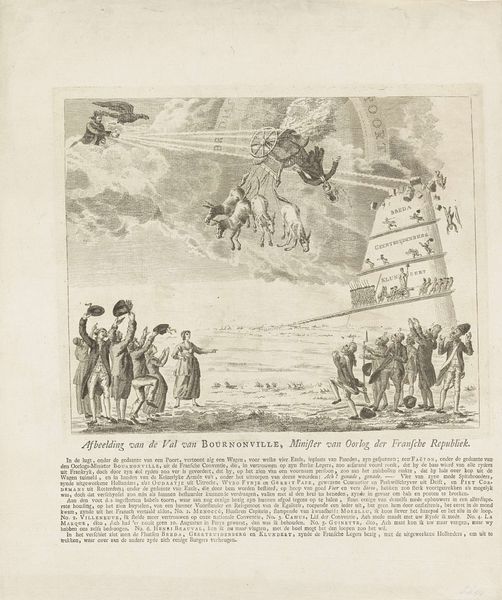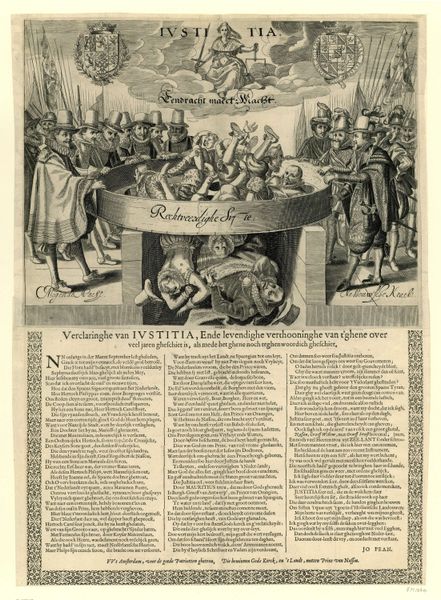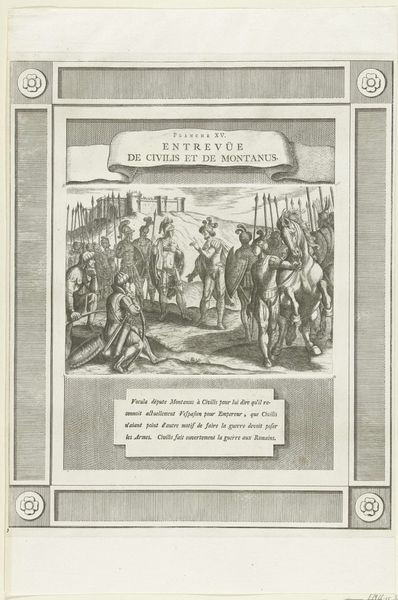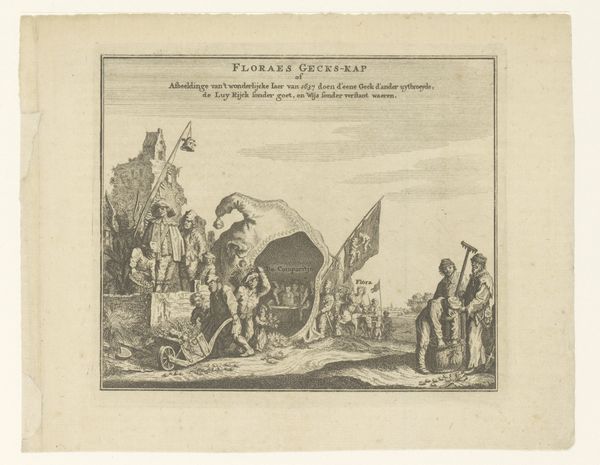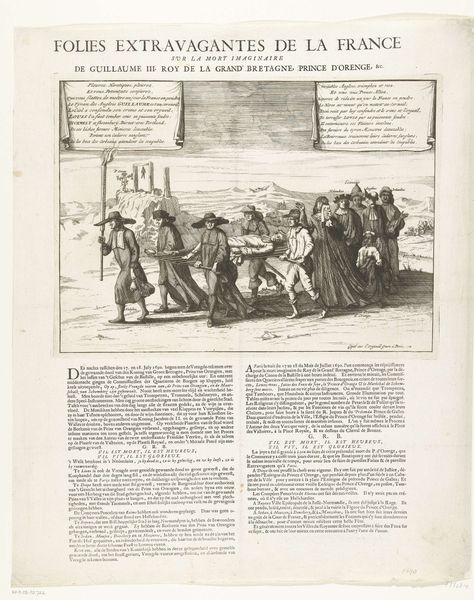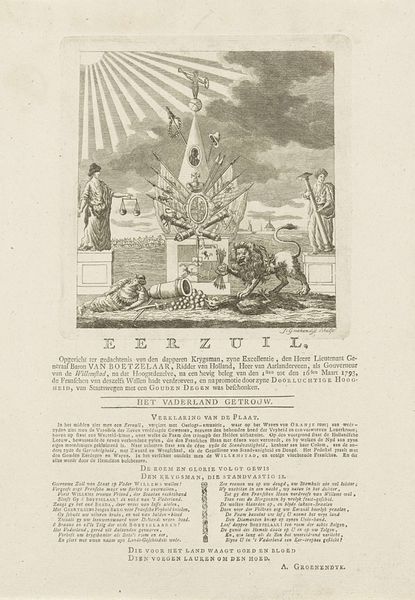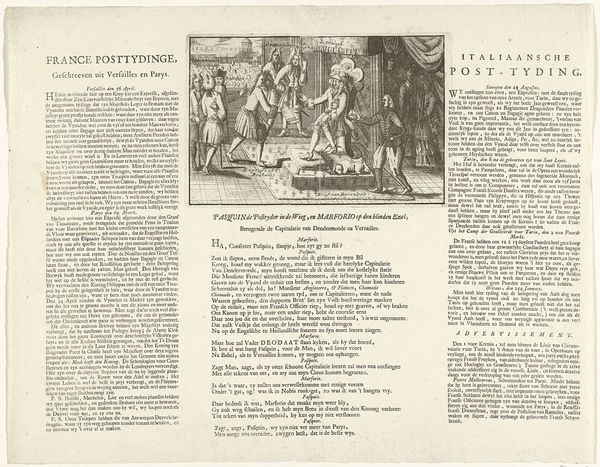
Dimensions: height 380 mm, width 425 mm
Copyright: Rijks Museum: Open Domain
Curator: Look at this intriguing print from around 1780. It’s called "Spotprent op de oorlog tussen de Republiek en Engeland," which translates to “Cartoon on the war between the Republic and England.” The artist is anonymous, and the work currently resides in the Rijksmuseum. Editor: My initial reaction? It's chaotic, almost carnivalesque. A dense cluster of figures arranged seemingly at random, floating above lines of close-printed Dutch script! I find the contrast between the delicate lines of the engraving and the violent scene fascinating, and somehow the work has a mordant tone. Curator: Yes, the "carnivalesque" really gets at the symbolism at play. Note the Dutch lion and British lion intertwined, their struggle visualized. Above them hovers a broken English flag. It speaks to a power shift. And there's that fascinating ship with figures on top, what do you make of those figures atop it? Editor: It makes me think of shipbuilding and the networks of craftspeople who would be required to deliver it - sailmakers, rope makers, carpenters… Each component shaped individually and carefully brought together. Notice that these processes are now fully mechanized in contemporary shipbuilding: what kind of change would have been apparent at the time in which this was made? Curator: A significant shift, that’s for certain. It touches upon England’s reliance on its resources at this moment in time as well. Consider the printed words—presumably offering commentary. Such texts democratize access in a way visual imagery alone cannot, further engaging the public with the conflict's narrative and meaning. The war must have significantly disrupted existing processes and trades as well. Editor: It definitely brings out questions around the materiality of power, not just its symbolic representation. The materials for ships of war, who owns them, who profits from them? The production costs are staggering even when labor is cheap. Who could consume these prints? They must be incredibly political things. Curator: Absolutely. And from my perspective, I see it acting as an allegorical mirror, reflecting a changing European landscape where visual narratives served a crucial purpose of disseminating very potent information, whether true or only suggestive. Editor: It has helped me remember that beneath all representations is a literal process that touches workers and materials directly - there is a way this cartoon invites reflection upon labor itself!
Comments
No comments
Be the first to comment and join the conversation on the ultimate creative platform.
